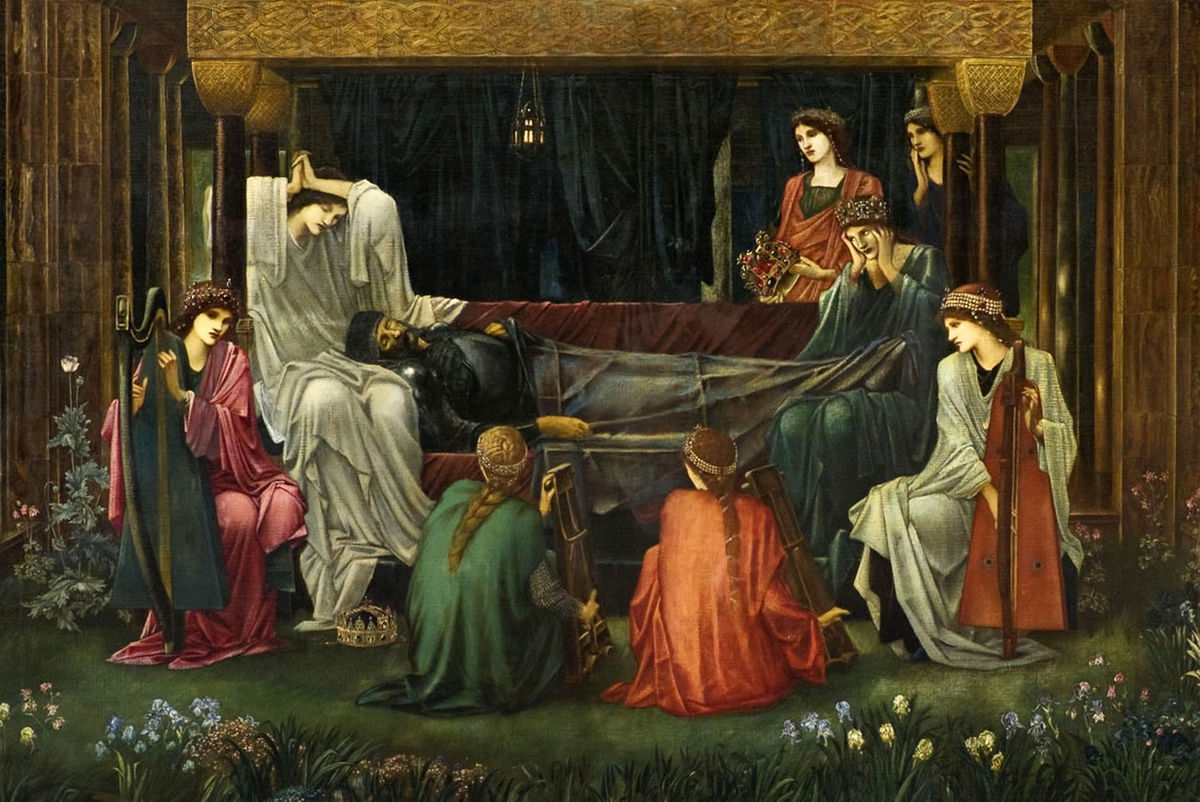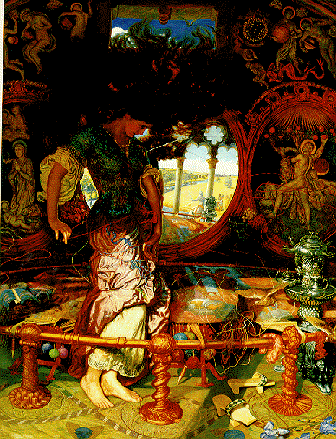About Alfred L. Tennyson: One of the most popular British poets, Alfred Lord Tennyson excelled at penning short lyrics. Born in 1809 in a noble and royal ancestry, he started writing poetry during his teens and to further polish his talent, joined the Trinity College, Cambridge. During his career, Tennyson also attempted drama, but his plays enjoyed little success. Awarded with Chancellor’s Gold Medal, he settled for nothing less and held the position of Poet Laureate until he suffered from a stroke and left the position in 1892.
Setting of the Poem: The baseless and inexplicable tears pouring from the eyes of the poet or the speaker looking at the autumn fields is considered to be the theme of the poem. “Tears, Idle Tears, a lyric poem written in 1847, is one of Tennyson’s most famous works, and it has garnered a large amount of critical analysis.The poem was about “the passion of the past, the abiding in the transient” and a result of Tennyson’s visit to Tintern Abbey. The poem is renowned for its lyric richness and the many statements rife with paradox and ambiguity.The ambiguity occurs in the poem in contrasting descriptions of the tears: they are “idle”, yet come from deep within the narrator; the “happy autumn-fields” inspire sadness.
Poetic Devices
Alliteration- stanza 1
‘Tears, idle tears’ and ‘i know not’ (line 1)
‘depth of some divine despair’ (line 2)
Stanza 2
‘Fresh as the first’ (line 1)
‘friends up from’ (line 2)
‘Over one’ (line 3)
‘ so sad, so fresh’ (line5)
Stanza 3
‘sad and strange as in dark summer dawns’ (line 1)
‘dying ears, when unto dying eyes’ (line 3)
‘slowly grows a glimmering square’ (line 4)
‘So sad, so strange’ (line 5)
Stanza 4
‘Dear as remember’d kisses after death’, (line1)
‘fancy feign’d’ (line 2)
‘lips that are for others; deep as love’, (line 3)
‘wild with’ (line 4)
‘Death in Life, the days’ (line 5)
Repetition- ‘the days that are no more’
Paradox- ‘O Death in Life’
Simile- stanza 2 ‘Fresh as the first beam’ (line 1)
Here the tears are being compared to the first beam of sunlight
‘Sad as the last’ (line 2) here the tears are compared to the last beam of
sunlight and hence are referred as sad.
‘Deep as first love’ stanza 4 (line 4)
STYLE
The poem ‘Tears, Idle Tears’ is written in blank verse and is unrhymed.
Tears Idle Tears Summary and Analysis by Alfred Tennyson
The poem ‘Tears, Idle Tears’ is a “song” within the larger poem The Princess, published in 1847. The speaker introduces the song without a clear understanding of what her tears mean. He comes up with adjectives to explain how the lost days are sad, fresh, and strange, and he calls them Death in Life. In the first stanza the tears are a paradox: they are “idle,” but they appear to have great importance. This paradox launches the speaker’s investigation of his emotions, seeking to understand whatever “divine despair” seems to be causing his physiological response. As the speaker looks upon cheerful autumn fields, he longs for bygone days. His feelings rise from the seat of emotion, the heart, and “gather to the eyes” as tears. He cannot link the tears to a specific memory, for they are idle tears—tears that he cannot explain. Apparently, it is the past in general that moves him.
In the second stanza, the speaker speaks of the fresh and sad feelings creating a turmoil in his mind. Feeling the presence of his friends upon their return from the underworld leaves the speaker fresh just like the first beam of sunlight glittering on a sail. Yet, the memory fades sadly like a sunset and indeed all those who we love sink that way, in the speaker’s view. And it can sadden, like evening’s last light on the sail of a ship carrying those friends beyond the horizon.This is how the lost days are both sad and fresh.
In the third stanza, nature also seems affected by the speaker’s melancholia, when they are filled with sleepy bird sounds so early in the morning. A person in the midst of the joys of life hears the birds and sees the sunrise with a different spirit than someone who is preoccupied with the lost days. How strange and sad it is for a dying man to hear the first chirp of the birds at the dawn of a summer day and watch the sun turn the window into a “glimmering square.” But still it’s the past that the speaker is not able to get over.
In the fourth stanza the speaker indulges in painful memories of kisses. Remembering is a sad, strange experience. What is remembered is paradoxically both present and absent, and more absent than present. More and more of life becomes memory as time moves on, with the absence of more and more friends and loved ones who once lived and breathed.The bygone days are as sweet to us as the memories of kisses from loved ones who have died—as as sweet at those we imagined we bestowed on the lips of a person pledged to another. Memories of those days are as deep as first love and full of regret for what we did or did not do. Thus tears flow from the eyes of the speaker remembering those bittersweet memories.
TONE OF THE POEM: The tone takes a shift around the paradox of the words of terror and tenderness both embedded beautifully in the poem. Tennyson said the poem was about “the passion of the past, abiding in the transient,” which also may provide insight into the final line about “Death in Life.” The poem is renowned for its lyric richness and the many statements rife with paradox and ambiguity.
CENTRAL IDEA: The poem ‘Tears, Idle Tears’ revolves around the central theme of experiencing the pleasing pain of remembering the past. This melancholy poem examines life from a perspective of life’s end with memories affecting the speaker in some indefinable way. Tennyson balances the sad part of the poem with sweetness, and love distant memories seem so real to the speaker that the past has a life of its own, and the poem suggests that this in the source of sadness that we get from “days that are no more”.Throughout this poem he ha tried to balance the images of hope against images of depression.
CONCLUSION: The speaker introduces the poem without a clear understanding of what his tears mean. He comes up with adjectives to explain how the lost days are sad, fresh, and strange, and thus calls them Death in Life. Tennyson also concludes that “Tears, Idle Tears” does not rhyme because the poem is not about a specific situation, or an emotion with clear boundaries; it is about the great reservoir of undifferentiated regret and sorrow, which you can brush away, but which nevertheless continues to exist. Thus, the poem seems intended as a universal reflection about loss, time, and memory that anyone can sing.
Some online learning platforms provide certifications, while others are designed to simply grow your skills in your personal and professional life. Including Masterclass and Coursera, here are our recommendations for the best online learning platforms you can sign up for today.
The 7 Best Online Learning Platforms of 2022
- Best Overall: Coursera
- Best for Niche Topics: Udemy
- Best for Creative Fields: Skillshare
- Best for Celebrity Lessons: MasterClass
- Best for STEM: EdX
- Best for Career Building: Udacity
- Best for Data Learning: Pluralsight














